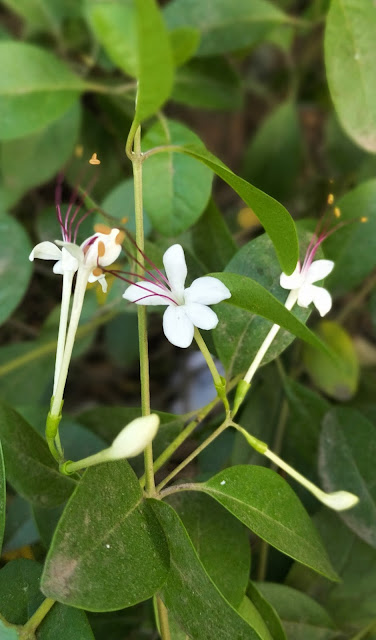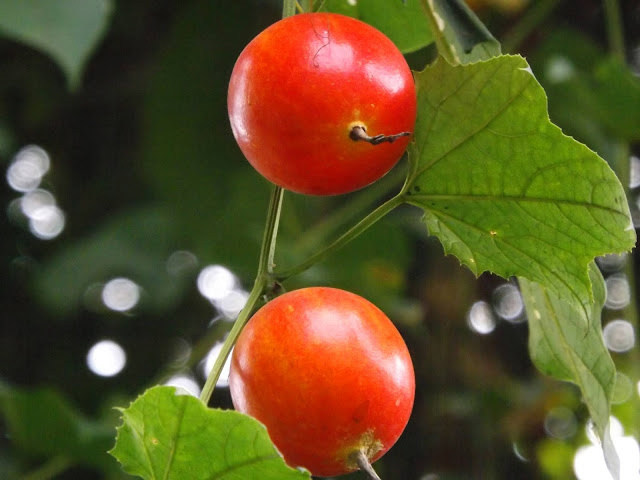Bon-jui or Glory bower, Volkameria inermis
Bon-jui or Glory bower (Volkameria inermis, Lamiaceae) is a semi-erect beautiful mangrove shrub, attaining a height of 3-4 m. The salt-tolerant plant's stem is woody. Yong shoots, petiols, leaf blades are usually glabrous but sometimes covered with minutely hairs.
Its geographical extent is quite large. It can be found in the countries of East Asia as well as South and Southeast Asia. It can also be found in Australia and Pacific Islands, such as New Guinea too. In Bangladesh, the flowering plant is found standing beside the muddy, wet and saline soils of cannals and other waterbodies of mangrove forests or edge of mangrove forests. In the country, it has long been planted as an ornamental shrub along roadsides and road islans. In some places it is also used as a hedge in gardens.
Other names: Koklota, Bakri, Batraj, Chitka bhat (Bang); Garden quinine, Seaside clerodendron.
Fruits, root, leaves are used as medicine. Roots are used in rheumatism, stomach upset and having poisonous seafood; leaves are in skin diseases, itches, fevers, beriberi etc.
Synonyms: Catesbaea javanica, Clerodendrum buxifolium, Clerodendrum capsulare, Clerodendrum commersonii, Clerodendrum coriaceum, Clerodendrum coromandelianum, Clerodendrum emarginatum, Clerodendrum inerme, Clerodendrum javanicum, Clerodendrum neriifolium, Clerodendrum ovalifolium, Clerodendrum ovatum, Ovieda inermis, Ovieda ovalifolia, Volkameria buxifolia, Volkameria commersonii, Volkameria neriifolia.









অসাধারন
ReplyDelete